OP Sequence
 |
 |
 |
 |
 |
 |
OP: 「HIBANA」 by (MindaRyn)
 |
 |
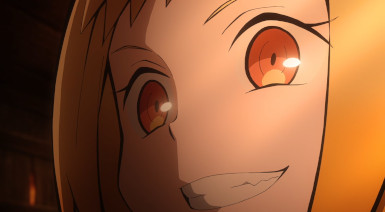 |
 |
 |
 |
 |
 |
 |
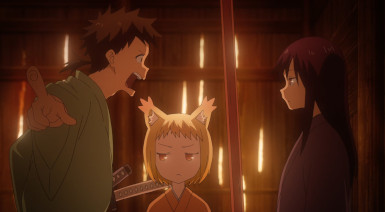 |
 |
 |
 |
 |
 |
 |
 |
 |
 |
 |
 |
 |
 |
 |
 |
 |
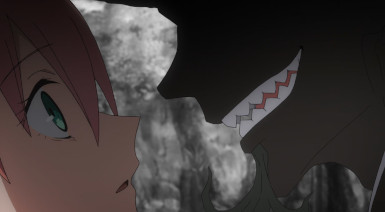 |
 |
 |
 |
 |
 |
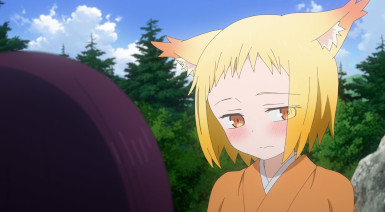 |
 |
 |
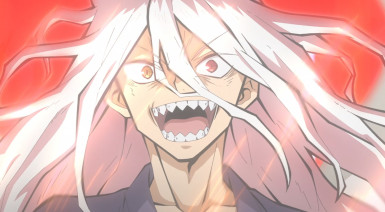 |
 |
 |
 |
「灼岩」 (Shakugan)
“Shakugan”
It’s more than a little surreal, seeing a Mizukami Satoshi series being competently adapted by capable adults. This was something I’d pretty much given up hope on, and the Bicuit Hammer debacle made me even more fatalistic if anything. But here we are, two episodes in, and all signs point to yes. I wouldn’t call this adaptation lavish, but it’s on the right side of “fine”. The look is old-school (those Gainax explosions) but pretty fluid, the casting is mostly on-point, and Evan Call is doing his thing. When a source material is this good, that’s really all it needs to succeed.
This week brings us the OP and (gorgeous) ED too, which amps up the emotional factor even more. There are a few glimpses of what Sengoku Youko will become, but mostly it sticks with the prologue, which is basically what the first cour is. At some point the pace of adaptation is going to have to speed up, as the series has 37 episodes to adapt 99 chapters and has basically covered four so far. But I’m thinking Aizawa and Hanada (director and writer) don’t want to rush through the world building stage. Even though I think the material later in the series is the best it has to offer, I can understand the thinking there.
The focus at the start here is the monster the Dangaisyuu went to battle with at the close of the premiere. And the two monks sent to deal with it are no match for the creature called Shakugan. Fortunately for them Jinka intervenes and saves them, even carrying the pair to safety as they flee. It may seem odd for Jinka to save katawara-killing humans from a (seeming) katawara, but things are never quite straightforward with the world reform siblings.
Inga (Ono Atsushi, really great here as usual) and Ouhou (Egashira Hiroya) are smart enough to know that Tama is right when she says Jinka saved their lives. And they agree to offer up what they know about Shakugan, which is quite a tale. She’s not in fact a katawara at all, but a human, subject to experiments at the Dangaisyuu head temple designed to create super-soldiers by fusing humans with katawara. She went berserk during the experiments and escaped, returning to her village in katawara form and exacting vengeance on the villagers who treated her as an outcast thanks to her spiritual powers (which made her a target for the Dangaisyuu Yazen (Tsuda Kenjirou – he turns up in everything if you’re patient) in the first place.
No one seems more upset about this than Shinsuke, who has a chip on his shoulder when it comes to authority figures. Inga notes the strangeness of the fact that he clearly grew up a farmer and hates samurai, yet carries two swords. But Jinka and Tama are plenty riled up too, and Jinka happily tells the minks he’s going to their head temple to exact some payback. The news that there are 300 warrior monks there doesn’t seem to faze him a bit, and Inga and Ouhou make no attempt to talk him out of it. Fighting is what they do anyway, so what would be the point?
When Shakugan (Kurosawa Tomoyo) awakens in human form, she has no recollection of anything after her time at the temple. Tama pointedly doesn’t reveal what happened at her village, where it’s clear Shakugan suffered even before Yazen bought her from her father. Jinka, in an acknowledgement that this amounts to quite a challenge even for him, tells Tama he needs to “take a little more than usual” this time, a process which Tama is clearly sheepish about and hides from view (ours too). The monks are ready and waiting, and the first major battle of the series doesn’t waste time with preamble.
If I know anything about Mizukami, it’s that he’s a humanist. Like Yukimura or Urasawa or Tezuka, he has a worldview which comes through in everything he writes – a point he’s trying to make about existence and how to cope with it. He’s not a writer who shows all his cards at the start of the game, and I think that’s more true with Sengoku Youko than any of his major series. This is all going somewhere, everything that happens matters, and the journey cannot be separated from the destination. Even at only 37 episodes this series won’t get to where it’s going in a hurry, but no step along the way is anything less than critical.
ED Sequence
 |
 |
 |
ED: 「Yuuyami no Uta」 (夕闇のうた) by (Keiko)

Well, we now know a little more about Shinsuke. Shinsuke wasn’t raised as a Samurai but as a poor farm boy. This explains Shinsuke’s failure to act in the first episode when he meets Tama and Jinka.
I like this 2003 – 2009 look in Sengoku Youko. The show reminds me of when Anime was starting to become mainstream before all the social politics complicating the Genre.
I agree about the look, but TBH there’s quite a lot of politics in SY, maybe more than any other Mizukami work, which tend to be more embedded in philosophy (though it has that too).